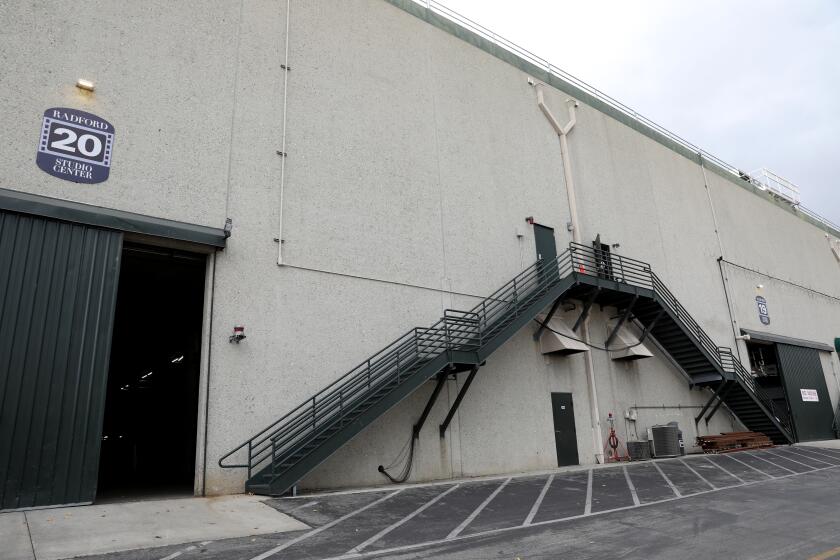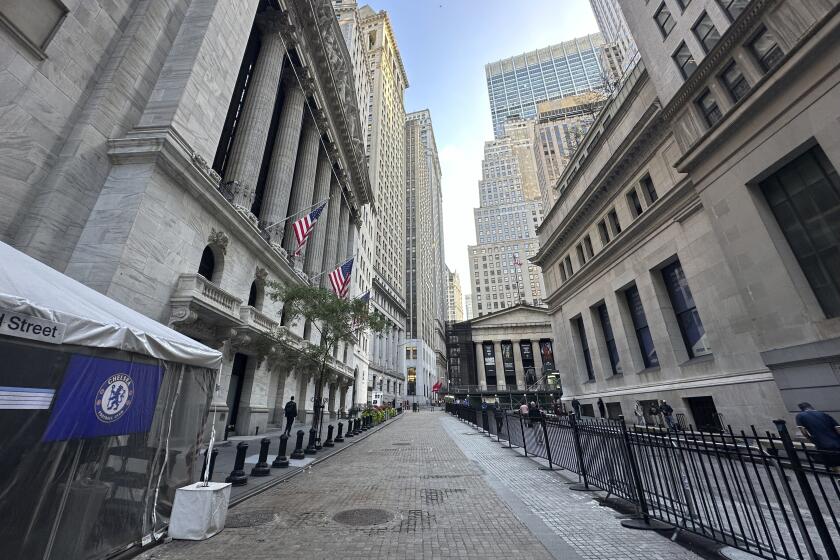Two Reports Show Economy Still Sluggish
U.S. manufacturing got a shot in the arm in September as new orders grew for the first time in four months, the nation’s purchasing managers said Wednesday, but the group and other reports indicated that America’s industrial sector remained sluggish.
Two separate Commerce Department reports from Washington on factory orders and construction spending provided further evidence of a slowdown in the overall economy, partly due to relatively high interest rates, analysts said.
A huge increase in defense orders helped boost U.S. factory orders in September, although without that segment factory orders actually declined, while construction spending remained flat during that month.
“This confirms what is essentially a weak economy,” said Lawrence A. Veit, economist with the investment firm Brown Bros. Harriman & Co.
The National Assn. of Purchasing Management said its purchasing managers index, a widely watched economic barometer, rose to 47.6% from 46% in September and 45.2% in August.
A reading below 50% indicates that the manufacturing sector of the economy is in decline while a reading above 50% indicates growth, according to the association.
The monthly report is based on a survey of purchasing executives in more than 250 industrial companies. The index is a composite of responses regarding six separate indicators, including new orders, production, vendor deliveries, inventories, prices and employment.
The Commerce Department, meanwhile, said orders for durable and nondurable manufactured goods totaled a seasonally adjusted $236.7 billion. Excluding the jump in defense orders, orders actually declined 2.1%.
In a separate report, the department said construction spending was unchanged in September after surging by 1.5% in August. Residential, non-residential and government construction spending totaled a seasonally adjusted annual rate of $415.6 billion in September.
Spending spurted in August because of a strong 5.3% increase in government building and a 2.9% gain in non-residential construction.
Contributing to the decline in the October purchasing managers survey was a steep drop in the export orders growth rate. While export orders remained relatively brisk last month, the index fell to 55.5% from 60.5%.
“If you keep short-term interest rates high, eventually they will affect exports,” said Thomas F. Carpenter, economist with ASB Capital Management.
The manufacturing and housing sectors of the economy have been hit hardest by high interest rates as the Federal Reserve tightened credit in an effort to slow inflation.
However, the survey also indicated a sharp turnaround in new orders growth after a four-month decline. Robert J. Bretz, chairman of the association’s Business Survey Committee, said the reversal “hints of a possible continued easing in the overall future rate of decline in the manufacturing economy.”
The new orders index rose to 51.4% from 45.4% in September.
Nevertheless, while U.S. manufacturing is sluggish, some economists said the purchasing manager’s survey has overstated the weakness.
“All this says is that the manufacturing sector is weaker than the economy as a whole,” said Giulio Martini, economist with Sanford C. Bernstein & Co. Inc.
The Federal Reserve Board also released a survey Wednesday showing that the nation’s economic growth continued to vary from slow to moderate early this fall. The survey did not mention any inflationary problems.
The report, known as the “beige book,” was prepared for a mid-November meeting of the Fed’s top economic policy-makers. It said conditions were mixed for manufacturing and construction, while consumer demand varied around the nation.
“Consumer spending is mixed, with a number of districts describing retail sales as steady to growing slowly,” the survey summary said. “Manufacturing activity is also mixed, with some districts reporting weakness in orders and shipments.
“Weakness of construction in some markets contrasts with evidence of some improvement elsewhere. Resource industries, including the energy sector, appear to be improving, as is agriculture generally,” it continued.
Recent economic indicators show sluggish economic growth following Fed moves to ease inflationary pressures by tightening credit.
More to Read
Inside the business of entertainment
The Wide Shot brings you news, analysis and insights on everything from streaming wars to production — and what it all means for the future.
You may occasionally receive promotional content from the Los Angeles Times.






